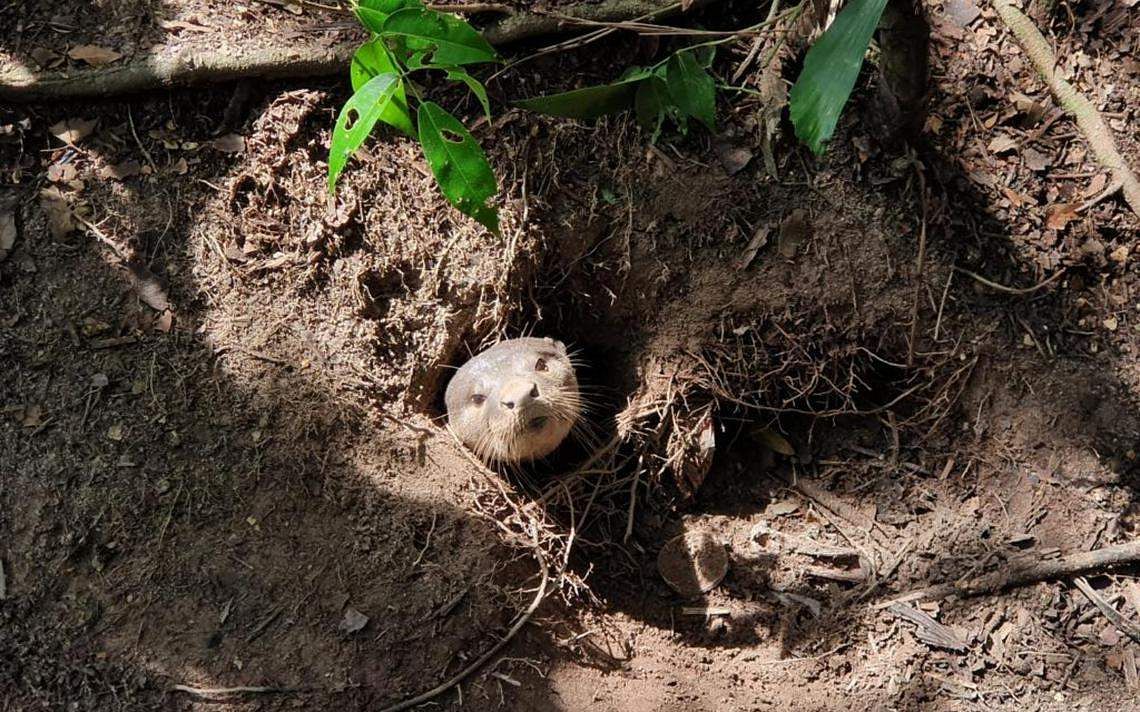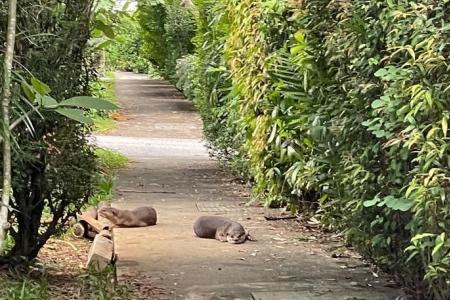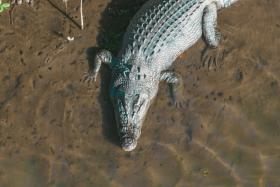Otter population rises to 170, NParks to relocate some from residential areas if suitable
The number of otters in Singapore has increased to 170 islandwide and the National Parks Board (NParks) is taking an integrated approach to managing their population, which includes relocating them and possibly sterilisation in the long-term.
Last week, six otters that had taken up residence in a Seletar housing estate were safely relocated by NParks staff in the first such operation conducted, said NParks group director of wildlife management Adrian Loo.
NParks officers and volunteers from the Otter Working Group had observed that these otters had wandered away from the waterways in Punggol to a housing estate in Seletar where they established a holt.
The otters were isolated from their natural food sources and had turned to foraging in Seletar instead.
Dr Loo said: “We monitored these otters closely to assess if they were suitable for transfer, for their welfare and to prevent human-wildlife conflict as well.”
To relocate the otters, perimeter fencing was installed around the holt they created and once the otters were secured, they were transferred to an area away from human traffic and with abundant food sources, said Dr Loo.
NParks’ update comes shortly after a report that otters had devoured more than 40 pet fishes in a Bukit Timah resident’s home.
Mr Tham Yuen Ying, 36, who lives in a landed property in Berrima Road, said that on Oct 2, he woke up to find the carcasses of his fish floating in the ponds he kept them in.
In November 2021, a man taking a walk in the Singapore Botanic Gardens ended up with more than 20 wounds, after the otters mistook him for a jogger running towards them. Mr Graham George Spencer told The Straits Times that he returned to the hospital three times to treat his wounds and incurred at least $1,200 in medical bills.
In a Facebook post on Monday, Senior Minister of State for National Development Tan Kiat How said that recently residents have had such encounters with smooth-coated otters in their estate.
He said: “While otters largely stay within the waterways, they may occasionally visit residential properties with ponds as the fish there are easy prey for them.
“NParks and the Otter Working Group have been working with homeowners and estate managers of these areas to implement measures to prevent otters from entering, such as meshing up gaps in gates and erecting otter-proof barriers for ponds.”

With these measures in place, the otters are likely to move on as they are unable to access the ponds for food, Mr Tan said.
Otters were a rare sight in the 1980s but have returned as a result of Singapore’s cleaning and greening efforts of its waterways where they naturally live.
The otters on the mainland are smooth-coated, while Pulau Ubin and Pulau Tekong have smooth-coated otters as well as small-clawed ones.
In April, ST reported that there were about 150 otters in Singapore, up from 79 in 2017.
On Monday, NParks said that there are now about 170 otters in about 17 families.
The Bishan, Marina and Zouk families are frequently sighted at Bishan-Ang Mo Kio Park, Marina Reservoir, Singapore River and Kallang River.
However, the highly territorial nature of otters, competition for space and mortality will limit how much the population can grow, said NParks.

NParks noted how the smooth-coated otter is listed as vulnerable on the International Union for the Conservation of Nature’s Red List of Threatened Species.
It stressed that the species is an important one which controls the fish population in Singapore’s reservoirs and waterways and ensures a healthy ecosystem.
Mr Bernard Seah, 53, a volunteer with the Otter Working Group which comprises members of the public and various agencies vested in the welfare of otters, said on Monday that it educates residents on how to respond when they encounter otters.
For instance, if they are walking their dogs, they should keep them on a tight leash as the dogs may chase the otters and frighten them.
Seeking the support of residents, Mr Tan said: “The community can help by observing otters from a distance and refraining from approaching or feeding them, especially when there are pups present as the adults would be more protective.
“Together, we can foster an environment that is conducive for both people and wildlife in our City in Nature.”
Get The New Paper on your phone with the free TNP app. Download from the Apple App Store or Google Play Store now


